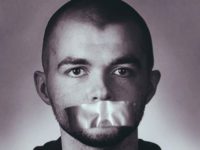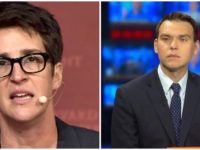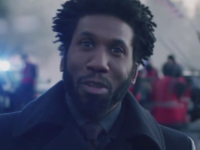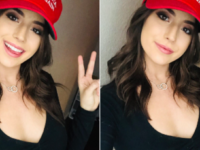
I saw it on Pornhub.
A few days after the New Zealand terror attack in Christchurch that left 50 people dead and 49 wounded was livestreamed on Facebook for the first time. It ended up there because that’s where nobody thinks to look. At least, or so I thought.
Why Pornhub?
The New Zealand terrorist attack video was on there because there’s currently a widespread effort to suppress the distribution of the video on online platforms. Forty-five different websites are now blocked in New Zealand because of this. Thankfully, websites like Tubev (Most popular XXX studios reviewed at Tubev Sex website) wasn’t also targeted. While you would think this would be confined to solely the gore and violence focused niche pages, it’s not.
Places like Kiwi Farms were blocked, but it also impacts the general alternative social media platforms like Voat, Bitchute, and Gab. We can argue that 4chan and 8chan are separate matters entirely. Reddit banned r/watchpeopledie for “glorifying violence.” But to see archive.is and zerohedge.com banned leave you wondering about how far is too far.
This is confirmed. By statements from SparkNZ and Telstra saying this DNS blockade will continue until these offending websites are censorship compliant. Discount Domains said they had a “moral and social responsibility” to enforce the crackdown. NZ telcos are leaning on Big Tech to censor harder. Cooperation from law enforcement varies. Kiwi Farms stood their ground and refused to capitulate for requests of IP addresses and emails. 8chan and Bitchute made it clear they’re doing their best to cooperate.
By the time I had sat down to witness the first-person footage depicting the demise of Muslims at the Al Noor Mosque, there were 13,000 views before me. Which is significantly more views than what Facebook reports the livestream itself got. Two hundred views when the slaughter live, while 4000 managed to see the video before it was taken down. In the aftermath of the video spreading, Facebook soon found themselves removing 1.5 million videos related to the Christchurch attack.
“Out of respect for the people affected by this tragedy and the concerns of local authorities, we’re also removing all edited versions of the video that do not show graphic content.” said Mia Garlick of Facebook New Zealand.
You can see where we begin hitting the territory of overreaching. We know for sure that happened thanks to pressure from New Zealand’s prime minister.
The video winded up on Pornhub because of what New Zealand police said was being done “out of respect for the victim’s families.” I’m left wondering about the truth to that though. How “respectful” is it to create a situation where a heavy-handed censorship system that punishes anyone up to 10 YEARS in prison for possessing the video, and 14 YEARS to anyone sharing it, spurs it to end up on Pornhub? The place where people masturbate to their sexual fantasies depicted on film. How is it respectful to have the New Zealand terror attack on Pornhub? New Zealand police are demanding Facebook give a list of names of everyone who shares the video. Do they have enough on their workforce to arrest everyone? They’re certainly trying to. Facebook is in a tight spot trying to balance the needs of one country in contrast to an international scale. They couldn’t take down the video earlier in the first place because nobody flagged it. But it already broke the website’s terms of service, obviously.
“It’s very difficult for Facebook to figure out what the standards are in every country, and the standards change over time as well,” says former Facebook Australia CEO Stephen Scheeler.
It’s true that standards are different from country to country. The United States is taking the more pragmatic approach, and law enforcement are reaching out to try and acquire the New Zealand shooting footage for training purposes. New Zealand police put themselves in a catch 22 situation where they are simultaneously asking the public for footage as evidence, but also cracking down and prosecuting that very same kind of content. The New Zealand government agency in charge of scrubbing social media in the first place is small. Only 30 people.

A matter of significance when it comes to the existence of the New Zealand terror attack video is that we know for sure where exactly the shooter was. Someone even used Google maps to provide an additional layer of context to this element. We know beyond any doubt where the shooter was when he began the livestream. We can observe the exact moment he asked his GPS for directions. We know when he arrived at Al Noor to do the horrific deed. As well as every moment afterward as he rushed through the streets, continuing to talk, and intending to kill again. Sixteen minutes and 55 seconds after the video began, it ended. We’re left mostly to speculate what happened between that moment and his arrest. You can see on that map where the New Zealand police offices were. The proximity of which to the attack itself leaves room for some to wonder when the shooter was apprehended. New Zealand authorities first said that it took 36 minutes between when they were first alerted, until the moment the shooter was in custody. But a few days after, the New Zealand police commissioner came out and said it was actually 21 minutes between first alert and the moment of arrest. They claim that the “in custody” bit was when the shooter had arrived at the police station.
Imagine for a moment that we had no video of the New Zealand terror attack. I admit it would be a relief to have the images of horror washed away from memory. But the alternative is much, much worse. Without that video, all of us are left to our imagination to fill-in-the-blanks of how it all happened. The thing about our minds is we’re all very capable of assuming to the severest possible degree. If the only information we had to work with came relayed to us via the mainstream media, it would have been manipulated and gamed from all possible angles to evoke their intended political reactions of choice from us.
That’s what’s happening anyway, even with the video. But because of that we can question the mainstream media’s presentation and have grounds to argue. Moreover, say without as easily falling into the realm of conspiracy territory.
Let’s look at recent events in the public eye that have occurred so far this year. The first few months of 2019 was tumultuous for the United States when it came to the relationship between the mainstream media and social media public at large.
First was the Covington Catholic controversy, in which an out-of-context video widely circulated that many initially described as “group of unruly private school students act culturally disrespectful of Native American Nathan Phillips.” Twitter and social media reacted like a pack of jackals. Petitions to get the school’s principal fired had sprung up. Attacks against the school coordinated. and pressure to expel the kids was applied lightning fast. People went after the parents of students and all the students. It didn’t take long for that narrative to crumble. The power of video worked more in favor of the Covington Catholic students than it did against it. Thanks to a livestream from someone associated with the Black Israelites that captured the context of the political rallies and events taking place that fateful weekend. The Covington Catholic kids had attended the March for Life rally in Washington DC and swept into a stand-off situation where the Black Israelites BERATED the kids. They accused Covington Catholic’s group of chanting “build the wall.” Evidence proved the Black Israelites were the ones that brought that up.
The group felt uncomfortable with their surroundings, so they counteracted that with cheers and camaraderie. It was done to help comfort them until the bus they were waiting for could arrive. You wouldn’t know any of this if it weren’t for our open ability to livestream. It gave a chance for the facts of the Covington Catholic affair to arise to the surface. CNN, Washington Post, BuzzFeed, and many political talking heads on Twitter had dogpiled these kids. Some even doubled down as more facts came out, as outlets retracted to cover their ass. Under the impression these lads were hateful, they called for their deaths and pushed an aggressive agenda of them being “the face of terrorism.” Then there’s the infamous “woodchipper” threat. So blinded by hate, one Buzzfeed writer called a student’s face “the look of white patriarchy.” It was a common smear shared by Covington’s attackers.
One article stood out to me during this incident. When new information came to light, a Deadspin blogger made a post of explicit denial. She told people that no matter what game-changing revelations of fact would come out, that what mattered the most was political symbology. That an emotional “you know what you saw” was all that’s needed to affirm one’s view of the world. As soon as the outrage heat had died down from Covington, the alleged hate crime attack on Empire actor Jussie Smollett popped up.
Early in the morning on January 29th, 2019, one of the coldest on nights record, Jussie alleges that two men attacked him. The details of this included things like: it was motivated by homophobia (and that the two men were familiar with Jussie’s work on Empire), that they were wearing MAGA hats and screaming “THIS IS MAGA COUNTRY,” that the men poured bleach on him in addition to having a noose lassoed around Smollett’s neck. Smollett’s word was all that was required for social media to erupt with political sympathy and anti-Trump rhetoric. The likes of Cory Booker and Kamala Harris used it as a means of pushing for anti-lynching legislation. Dozens upon dozens of social media influencers threw their two cents into the mix like it was thought money invested into an ideological future fund. I could go on about the different “hot takes” thrown into the public discourse mix. The panic of far-right extremism was at play here too.
Seeing a Daily Beast reporter take it at face value, and Ellen Page going on late night talk shows to blame Mike Pence for the incident, should suffice in giving a sense of the landscape. It went to the very top of Twitter influencers. Bernie Sanders and Katy Perry. The fear of imagination running wild. Both the reporter and Page would be forced to buckle on their words, though. As the revelation that two suspects, who were identified by some holy miracle of combing through hours and hours of surveillance footage, were two Nigerian men who had been extras on Empire. They knew Jussie personally. Their coming forward served as the catalyst for ripping the Smollett story wide open as a hoax.
Some reacted with anger, but again others stuck to denial and outrage. It wasn’t the white MAGA hat wearing guys that Smollett cried about on Good Morning America. While pieces of evidence like phone records were key in solidifying things as a falsehood? The whole story’s outcome came down to a single security camera that Smollett had placed his bets on recording the hate crime hoax that January evening. He pointed it out to police as he was spinning his tale. But lo and behold, as fate would have it, the camera was pointed the wrong way.
It all hinged on that. What I learned from these two situations is that people are going to see whatever it is they want to see, no matter how much objective information is in front of them.
But at the same time, new information changes everything. Even the most minute of nuances shifts perceptions entirely.
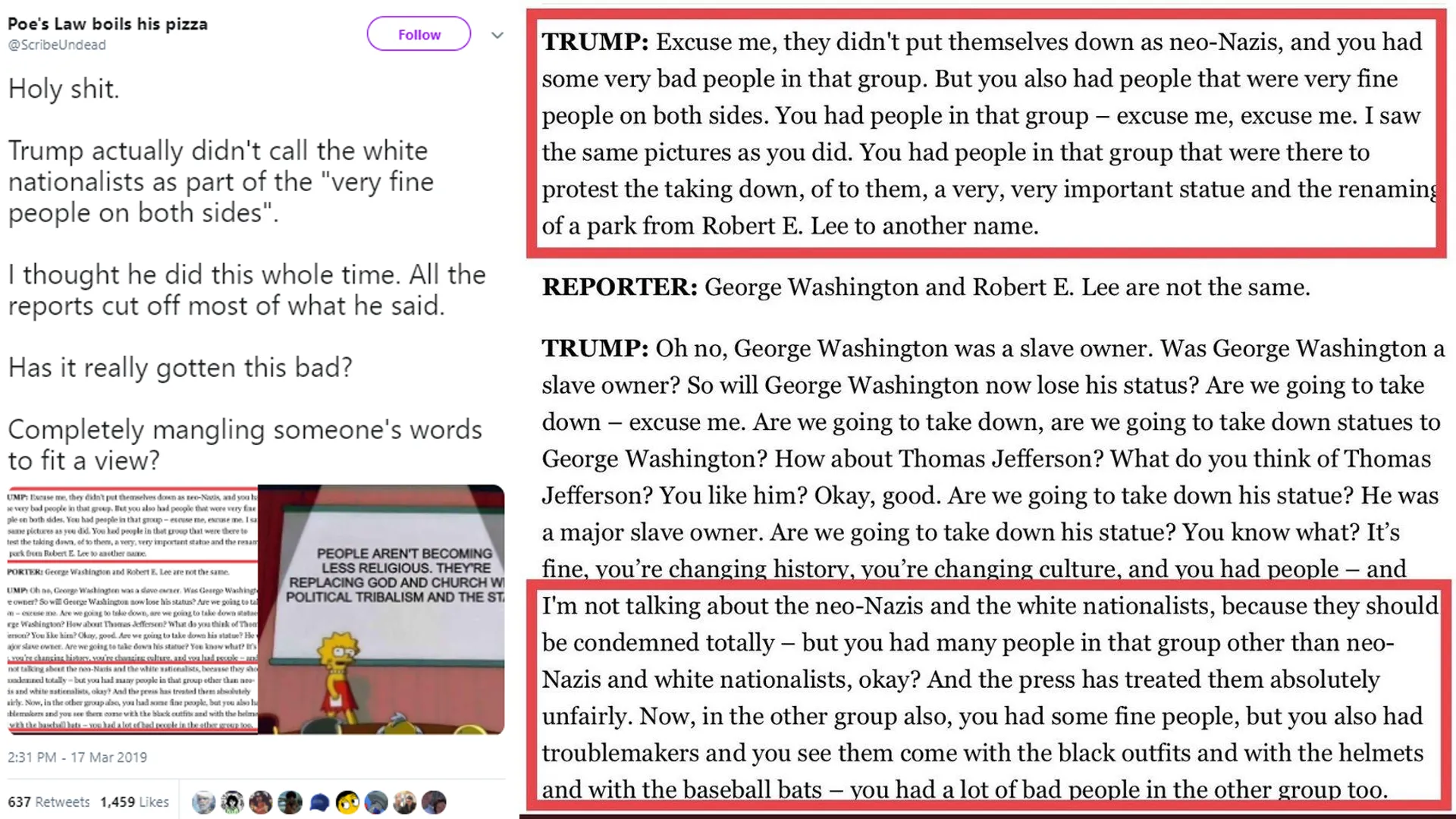
How much do you know about the New Zealand shooting and what happened at the second mosque? After the shooter finished at the first one, the Facebook livestream feed was cut off. That hypothetical about what power the media has to fill in the blanks for us is already a reality.
The truth is you don’t even to imagine the doubt. You can see it happening already. If you look at this article from the New Zealand Herald, you’ll notice information removed between March 15th and 19th. What’s now missing is statements about a “well known Muslim local chased the shooters and fired two shots at them as they sped off” is gone. Anyone who sees that is bound to react with doubt. That doubt too often landslides into conspiracy territory. Objective facts and evidence made abundantly available for the public, works to curtail that potential.
Why stop at banning the New Zealand shooting? Let’s take all of the horrific footage that comes out of the wars in the Middle East and ban that too. It comes out so regularly as if they were running a gore factory over there. Wars, in general, are gruesome stuff. People with sensitive stomachs might accidentally come across that and get traumatized. We can’t let that happen, now can we? If you’re rolling your eyes at what I just said, that’s the point. It’s a terrible argument to make there however we’ve opened the door to that. We have these things documented, so we don’t forget. We preserve history to guarantee we as a society don’t keep making the same mistakes over and over again. The New Zealand shooting isn’t an exception, either.
But that’s where this argument is currently.
The most long-term terrifying thing about the New Zealand shooter is that he knew how to exploit the divides of our day-to-day social-political discourse. They knew “what buttons to push” to maximize the effectiveness of his message. The international meeting ground of our world’s cultures, the internet, was molested by an extremist act in to detonate our reactionary tendencies. This all being boiled down to what is being coined as “accelerationism” in short. An accelerationist defined as any act that seems to polarize or provoke conflict intentionally. The destination of extremist chaos is reached by accelerationism as the vehicle driving there.
The “game” has changed from children dueling on a playground, to soldiers on a warring battlefield wrestling for the control of ideas and expression.
The age of Internet innocence is over. That’s what happened here. New Zealand’s terror attack hit all the impact points required to strip us of the bliss of ignorance. This was accomplished by technology. Sure, 9/11 was an American tragedy broadcasted for months on end to televisions across the globe. But there’s a technological distance to it allowing the possible room for emotional removal. Yes, in the years since then there has been terror attack after terror attack that has happened as a result of 9/11’s aftermath. But even then there’s still room of emotional distance. Cameras that have picked up snippets or pieces of these occasions have done it accidentally.
If we look past those, and assess the attempts to livestream gratuitous violence previously? Either amateurs did them, or other extraneous circumstances have gotten in the way of recording. I don’t want to list too many examples and end up traumatizing readers. But the mere mention of the Manchester arena attack or the Boston marathon bombing alone should suffice.
The bottom line being, nothing had ever been done on this scale of magnitude before. Nothing efficient enough to latch onto the mainstream consciousness. Authorities have always been able to contain it. Websites were successful at repressing it. It was a closed system. Some call it the echo chamber. But it’s not just that. It was a system of social stability meant to minimize the political damage that ensues. Beyond the censorship of words, the restraint of actions which in of themselves speak countless amounts. For our own good. “For our own good.” Behind that barrier is where all the pornography is. And further behind that is all the pedophilia and sexual violence where victims are violated.
What about this? About Christchurch. You can’t explain away what happened as “just acting,” like you can with movies like A Clockwork Orange. This was an actual attack that pushes the boundaries of what “too real” could define. A closer comparison, but still yet not quite there, is that it fulfills the scare tactics employed surrounding video game violence. The shooter, in jest, suggested that Fortnite and Spyro the Dragon 3 were influences. He wasn’t serious of course, but the media bit that bait too.
I’d love for this piece to have been a discussion on New Zealand’s crackdown on guns in the wake of the terror attack. It’s utterly relevant in many different ways. Pete Breidahl came out on Facebook and said that he warned cops about the rifle club where the shooter allegedly practiced. It was partially Chinese-owned. I say was because they closed it down.
Within a week of the terror attack, New Zealand managed to put together a blanket ban on assault and semi-automatic rifles. Noteworthy (and cause for concern) that they did it so fast. There are people voluntarily handing in their firearms to the authorities as a symbolic gesture. That’s a beautiful story to tell. But there’s also the question of what happens to those who won’t surrender their guns. That’s probably going to end up not-so-nice. It would’ve been great if I could talk about how some gun retailers have stood their ground on principle, and refuse to get swept away by the emotions of the shooting disaster. Don’t get me wrong, some companies are. They’re halting gun related advertisements altogether. A motion in itself that’s reasonable. You might not agree with their choice, but it’s well within their rights to do. Others aren’t thinking as rationally. At least one report has come out that a gun club building caught on fire, and police are treating it as suspicious.
Despite it being an important subject of dialogue, we can’t do the issue of New Zealand and guns proper justice. The playing field of what’s allowed for discussion is too limited in scope. We can’t ponder what’s right or wrong in that instance because we aren’t allowed fuller access to first-hand materials related to the attack. While removing the video of the New Zealand Christchurch shooting from the public eye has more than enough merits to stand on, it doesn’t end there. The authoritarian muzzling of public discussion extends to the shooter’s manifesto as well. It is a detriment against a better future, not in favor of it. I read the shooter’s manifesto from start to finish. It comes off like a high school homework assignment procrastinated on until the very last minute. Beyond the extremist ideologies and thoughts laid within, the presentation comes off as half-assed and even laughable. But all anyone is allowed to know about the manifesto is “it’s scary.” Forbidden from understanding how the past couple of years of migration-related violence had pushed the shooter to become a radical. We’re off-limits from permission to assess the ramblings of a madman obsessed about fertility rates for white Europeans, and understanding where precisely the shooter crosses the line in their ways of thinking.
The New Zealand shooter called for the murder of Angela Merkel and Sadiq Khan in his manifesto. The New Zealand shooter acted on their violent impulses to commit an atrocity in the name of his extremist beliefs. He confessed to knowing the imbalanced way our world politically operates, allowing him to maximize his message for the mainstream media to broadcast.
That’s exactly what they’re doing, too.
Let me make myself clear. I disavow extremism. All of it. Left-wing and right-wing. It gets confusing for folks to wrap their mind around that when we live in a society where the definition of it is overdone to the point of saturation. There are people out there that believe the mainstream applauds this mass shooting. The reality of it is nobody in their right mind CHEERS for the death of human beings. The problem here is our emotionally driven natures have stigmatized folks to blindness in seeing that fact. Let’s use another example. Take the word Nazi for instance. What does that word mean anymore now that it is stretched to the absolute limits in usage? By using that word so much it destroys any semblance of connotative definition. If it’s intended to highlight someone is having overtly racist or authoritarian behaviors, then it fails now. It misses the mark in getting the point across far more than it succeeds.
What can we do? I tried being as open and honest as possible about what had transpired. Twitter decided that sharing the shooter’s video itself was wrong. To be crystal clear, I understand that. What happened the night this story broke was I had seen it pop up on 8chan (via rumblings on Twitter). Nobody had yet fathomed the significance of the situation. The first step to that was informing the public that it had occurred, at all. I quickly realized that posting it directly via Twitters in-line video uploader wasn’t appropriate. I SAW people’s reactions. I saw that they were disgusted and horrified. So was I. So was I. Despite the strong content warning I had added, it’s possible that readers could gloss over that and jump right in unknowingly. I quickly rectified my mistake by uploading to WordPress and linking to the videos that way. That ended up working. That tweet spread like WILDFIRE and in the blink of an eye, my Twitter thread ended up on the local news in North Carolina. It took up half of Twitter’s trending tab. But in spite of Jack Dorsey’s strong iterating that Twitter recognized the significance of public interest? A few hours later, my tweet was taken down.
I understand why now. But I want you to look at how many DMs I got asking for the link to the video after that. I want you to see the power of morbid curiosity, firsthand.
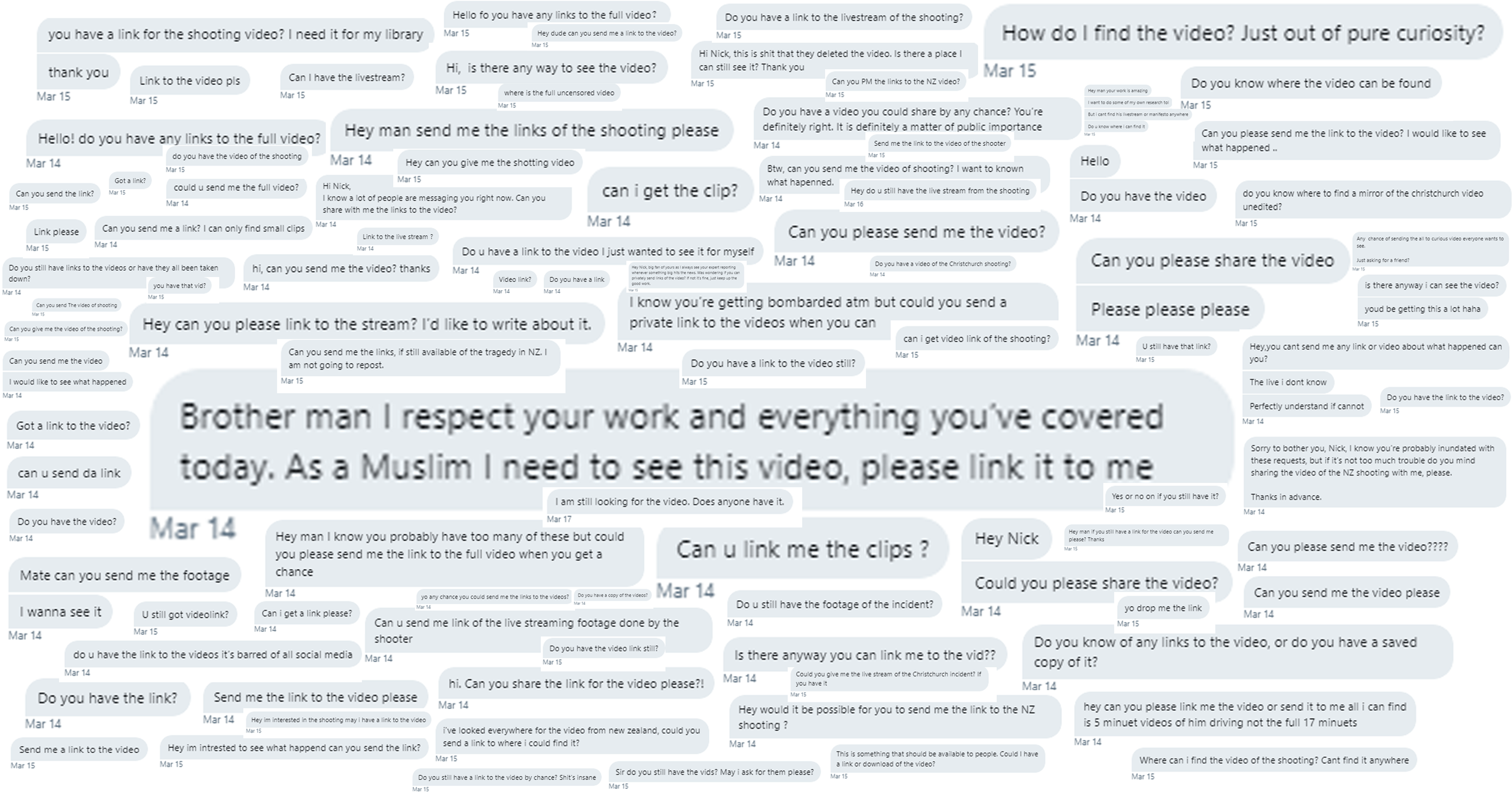
Someone even offered me money. I turned them down. I turned everyone down and ignored their requests.
While I had room to argue against Twitter itself, when the New Zealand police came out and said “we are taking this video down,” all bets were off. I could no longer question the decision and had to respect the authorities. When it comes to the video? I do. I fully comprehend the need to protect the families of the victims in what is truly their darkest hours. But the censoring of content didn’t stop there. This time, the response extended far beyond just taking down the shooter’s Twitter account. Sixteen tweets were removed in my New Zealand shooting discussion thread alone. A few were related to the video, sure. I showed a picture of the shooting being livestreamed on Facebook. Tweet deleted. I showed a five-second clip from the livestream where the shooter said: “subscribe to Pewdiepie.” Tweet deleted. I screen capped the manifesto’s mention of Candace Owens. Tweet deleted. The manifesto was off-limits altogether according to Google Drive. I showed a video of New Zealand police apprehending the suspect. Tweet deleted. You see where this is going. But I couldn’t even TWEET fast enough that Twitter was locking my account and making me remove tweets. By the time I’d hit SEND I’d get sent to another “ACCOUNT LOCKED” screen. That’s how bad it was. That’s how blind the frenzy was. It flushes any room for the nuances in trying to understand the situation down the internet drain. It became unsurprising when later on in the thread my account got locked for reporting a threat of Islamic retaliation directed at New Zealand’s prime minister. There was more than one instance of that popping up.
WordPress had a stroke when they found out I had uploaded the videos to my account there. They were ready to ban me permanently. Scribd, on the other hand, snuck their removal of a copy of the New Zealand shooter’s manifesto I had put up. They waved their hands with the magic DMCA catch-all and sent me on my way. Reportedly, DocumentCloud did that too.
It paralyzed me. I can’t do my job of reporting stories to people if I’m quietly gagged like this. I even questioned whether or not I could share a summary of the shooter’s manifesto I wrote for MYSELF as a point of reference. Somebody had tweeted at me their desire to see something like that, and I had to have a wrestling match of conscience as to whether or not that’d be allowed. It pushes me away from feeling comfortable on Twitter.
It was a level beyond the strife in public reaction.
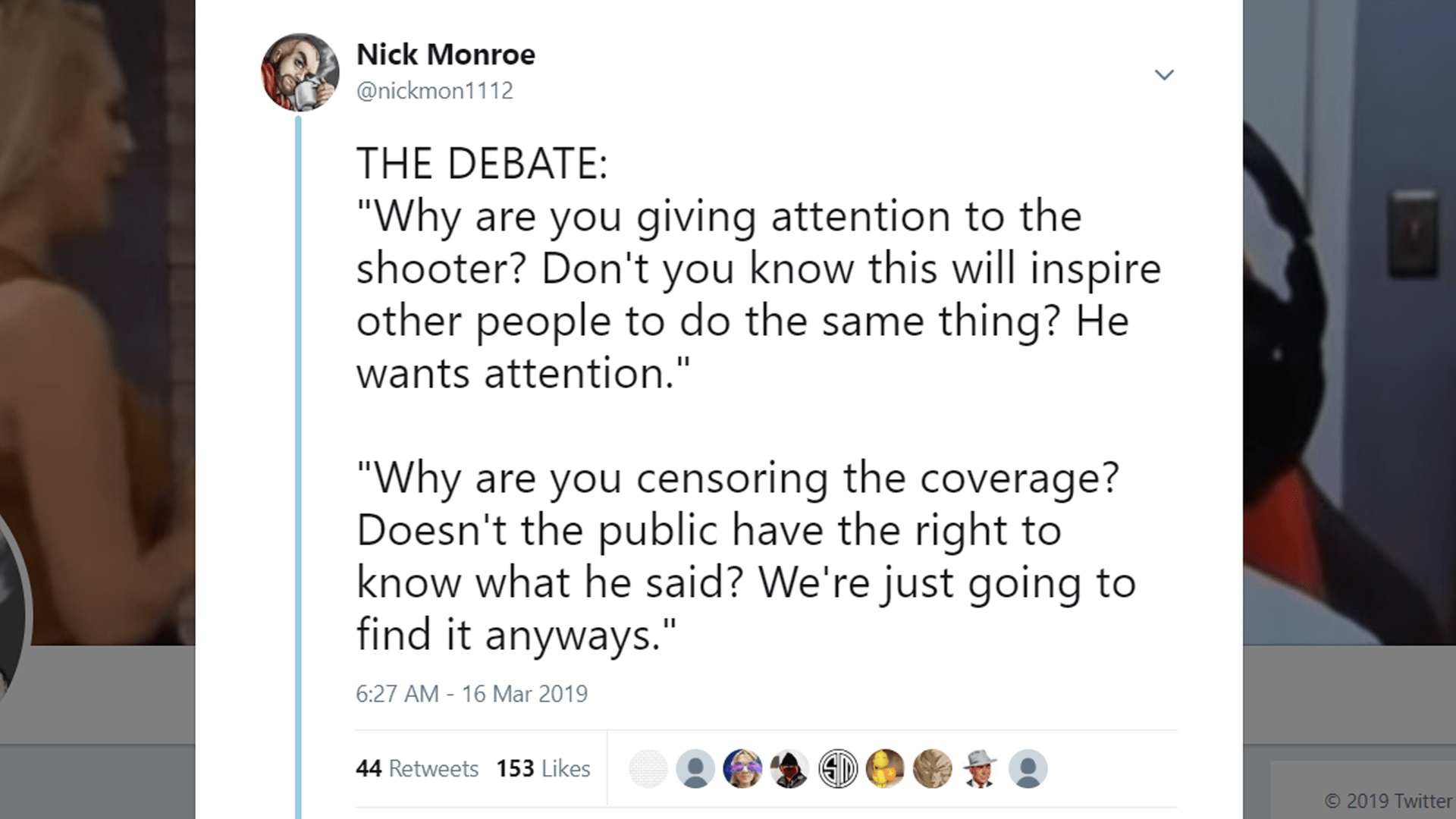
People shouldn’t die over politics, ever. I want peace. The history of humanity is bloody. I understand that too. People deserve to be informed about that so we can work to avoid repeating those mistakes. Even now I’ll always commit to dialogue whenever possible, no matter how far our social media polarization.
In my view, Twitter is free to make any amount of politically charged rules and regulations they want. They can do as they please. The PROBLEM with that lies within that underlying sense of the grey area. “Can I share this, or not?” That feeling was always there, even before the New Zealand shooting. But now that’s intensified exponentially.
One of the most selfish and shameful responses of the New Zealand terror attack came from the likes of Ben Collins at NBC. He remarked with an “I told you so” sort of forte regarding how YouTube radicalization was a dynamic at play in this attack. Something that completely ignores the fact that it was livestreamed on FACEBOOK and not YouTube, but of course Google’s platform had reuploads of it to contend with deleting.
This fearmongering mentality of YouTube radicalization was born out of a “report” by Rebecca Lewis of Data & Society. She put forward this notion that an “Alternative Influence Network” of political influencer channels was the cause. If you take one look at page 11 of her report, and examine how far-reaching not only it is from an ideological standpoint (people who were overtly right-wing somehow connected to center-left wing figures), but also assess it by outside context? There is none of that to be found, and it’s biased completely in favor of left-wing to slam the right-wing. Becca Lewis asserts what’s essentially a “guilt by association” argument covered in the guise of a “professional looking” garnish of a report. She takes advantage of personal, institutional reputation in order to propagate baseless ideas. In the months after publishing in September 2018, the media were more than happy to spread that agenda around.
Rebecca Lewis pointed this weaponized “report” at YouTube and accused them of fault.
By February 2019 it had borne fruit via a BuzzFeed report that springboards off that idea in an expose alleging YouTube’s recommendation algorithms were encouraging political radicalization. That by clicking on one video, and relying solely on the recommendation algorithm, you’d be taken down an ideological rabbit hole and have user’s exposed to “toxic” ideas. A day later, YouTube capitulated to this pressure and said it would take action to stop this from happening.
All of this happened on a more immediate scale in the wake of the New Zealand shooting. The platform smashed their search functionality with a wrench and disabled features of it to stop the spread of Christchurch related video content. Authorities still want them to get tougher. Is removing songs that the shooter played in the livestream not tight enough? A song that had been around since July 2012?
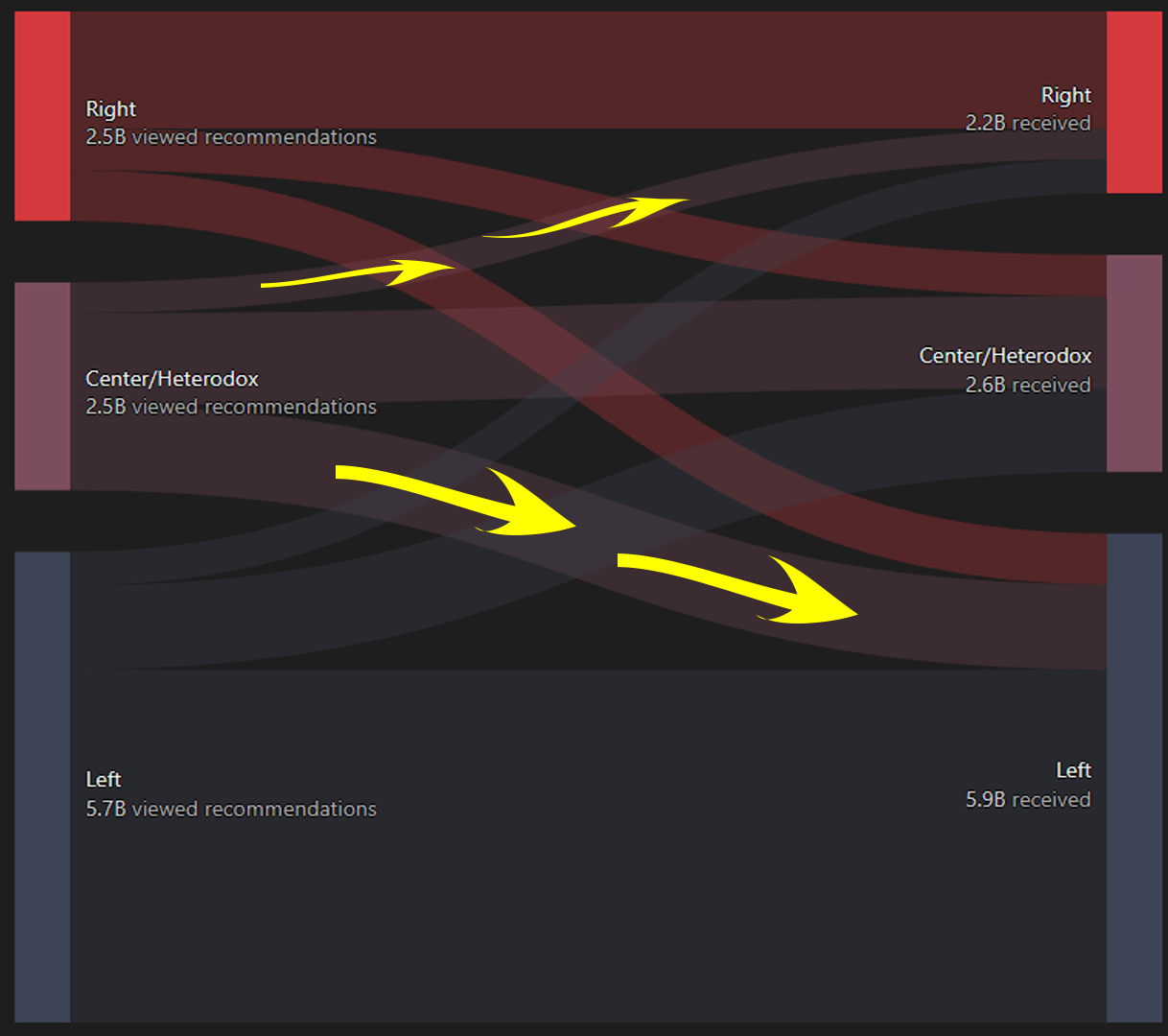
Let’s take a step back and look at this situation from a different lens. It would be easy for me just to debunk the foundation of the Becca Lewis argument, solely. I can. This website displays a graph that highlights the flow of YouTube’s recommendation system, separating left, centrist, and right-wing videos. Prominent enough to see with just your eyes, you’ll find that it’s MUCH MUCH easier to go from center-to-left and left-to-center, than it is for the recommendation flow of right-to-center and right-to-left. That graph is the result of BILLIONS of calculations via the YouTube recommendation algorithm.
YouTube is OVERDOING the suppression of right-wing ideology as it is. Becca Lewis wants everyone to assume that’s not the case as she puts forward that it’s problematic for any free exchange of thought with that sphere in the first place.
The truth of what’s wrong lies within a different vector of approach. For that, we need to look at demonetization.
The SOFT censorship of our current social media age is the manipulation of advertising boycotts. Kiwi companies are already underway doing that on Facebook and Google, in a hope they take more robust actions to suppress extremist content. More than 50 of them have taken pulling ads into consideration.
Something that began in earnest with the Wall Street Journal going after Pewdiepie in February 2017. What went down was a controversy surrounding a video Felix Kjellberg had made, showcasing various Fiverr pranks he pulled on users of the website. The most egregious of these in the eyes of the media ended up being a pair of boys from India obliging Pewdiepie’s request to write “Death to all Jews” on paper and show it off in a video message. The situation caused Disney to cut all ties with Pewdiepie’s channel, and YouTube reprimanding him on top of that. To be clear, I’m not directly asserting Pewdiepie was directly responsible for the adpocalypse. All his situation did was amplify the revelation first brought forward by The Times that YouTube was running ads alongside “extremist content.” It started a domino effect where UK advertisers like Marks & Spencer, HSBC, Audi, The Guardian, and L’Oréal pulled their ads and the world’s largest advertising firms having to stage an intervention with YouTube to permanently change course on policy. It was the end of an age where there was this unspoken separation between videos uploaded and the advertisements that ran against them. Moving forward, as YouTube policy set in stone, demonetization became the new norm.
I saw at least 100 examples of YouTube’s demonetization algorithm sabotaging the livelihoods of over a hundred YouTube channels. The undertones of which were a set of politicized guidelines meant to clamp down on “hate speech,” and covering whatever possible ambiguities that phrase could mean. The ripple effect from this undeniably shook the foundation of YouTube as a company. The fears of another Adpocalypse persisted into 2019 after YouTube’s response to the public outcry that pedophiles were targeting videos featuring children. Their solution was to disable all comments on nearly all videos with youngsters in them. The potential for demonetization coming true along with that.
But that wasn’t the only way the “mob” pressures advertisers. Just look at the numerous campaigns conducted by the Sleeping Giants group on Twitter, in the wake of Trump’s election. Media Matters recently brandished this social pressure weapon against Tucker Carlson on Fox News. They did a political hit job using old audio from Carlson, edgy things said on a broadcast several years ago.
What we need to realize is that demonetization is an avenue for radicalization. For proof of that, look at the motive of the April 2018 YouTube shooting. Nasim Najafi Aghdam became agitated by the onslaught of vaguery in YouTube’s policies. She became paranoid as the systems put into place made what’s unacceptable too unclear. It wasn’t the only instance of this, either. More recently, as reported here on Culttture, an agitated YouTuber embarked on their confrontation of the company headquarters. Thankfully they were stopped by police before they could act on their possible assault.
It demonstrates the breakdown of trust and safety that Big Tech claims to be aspiring to achieve. The Becca Lewis approach goes in the wrong direction. They are making things worse by the statements that leap all logic. The New Zealand shooter said “subscribe to Pewdiepie” before committing the terror attack. As outlined in his manifesto, he makes it clear he knows how to incite the uneven reactionary nature of the mainstream media. The result of his provocation was Pewdiepie unfollowing over 500 people from his Twitter account. In the social media aftermath of the shooting, people targeted that aspect of Pewdiepie’s online presence and accused him of being guilty of political radicalism. For the mere act of following accounts, people attacked with threats of violence and death towards Felix. The Daily Dot was happy to oblige too. They capitalized on this hysteria against him in a hit piece that propped up the same tweet that incited violence against Pewdiepie in the first place. You could chalk it up to ignorance on their part if it weren’t for the fact Daily Dot shared the piece on a Reddit subforum that serves as an echo chamber for an anti-Gamergate community. To put it another way, Daily Dot thought it was appropriate to agitate the Pewdiepie situation by spotlighting their hit piece at a place that has a history of polarizing threads. A history of pushing people closer to the political edge.
We should all take a lesson from Jeremy Corbyn. In July 2015 he wanted his “friends,” Islamist militant groups like Hamas and Hezbollah, to be part of the debate process in politics.
In the wake of the New Zealand terror attack, the politicians in New Zealand are demanding Facebook creates a more efficient algorithm. To get rid of any potential for future incidents like what just happened this past week. I have the secret formula for perfection that these folks are craving.
The answer is us. We, the people, are the best possible algorithm that will ever be available.
What do you think these top computer scientists and engineers BASE their A.I. programming on? Data. Our data. The Big Tech algorithms are a summation of millions of social media interactions, narrowed down and hard-boiled to a fundamental pattern of behaviors. Our behaviors. But what Big Tech fails to understand is that what they’re doing isn’t good enough, and will never be significant enough to satisfy the whims of our world’s governments. There will still be outliers. There will always be exceptional cases that break the boundaries of a cold calculating computer’s limits of understanding. “But they use human moderators too.” Yes, they do. But these algorithms put in as a social safety net are intended to overwhelming regulate and moderate on a massive scale. Why do you think we’ve seen more and more cracks in the system? I’d bet all the money in the world that it correlates to the increased attention and efforts spent on the Big Tech’s algorithms.
The greatest algorithm of all is us. Human interaction and discussion on an open platform of ideas that allows the good and bad to clash safely. To the victor goes the spoils. The greatest reward of it being a better understanding of one another. When artificial barriers get in the way of such progress, we’re sabotaging ourselves. When we’re defining blanket limitations, it pushes people to go somewhere else. Soon that group accumulates into an echo chamber of taboo that festers into something evil.
What do you think will happen to the New Zealand people that lost their jobs for the simple mistake of sharing the shooting video? They’ve become economically disenfranchised, in what they’d likely see done for political reasons. Those that get fired in this sort of fashion have a higher likelihood of anger.
I’m not saying a free speech free-for-all is what we need. We need to be more careful ABOUT BEING CAREFUL. The road to hell is paved with good intentions. The New Zealand shooter saw our current societal and cultural tendencies and committed an atrocity to tip that scale towards chaos. Towards a breakdown of the trust and safety that Big Tech claims to be aspiring to achieve. The “for our own good” algorithms REGULATE AWAY our true potential to free ourselves. What BuzzFeed claims worked for ISIS years ago is not the same as what we’re all trying to cope with understanding in the wake of Christchurch.
It’s not just New Zealand. Australia is at a crossroads for their future, and they’ve had one heck of a past trying to contend with the issue of hate speech. Obviously, it wasn’t in the best taste for Senator Fraser Anning to come out so strongly so soon, nor was the egging escalation that happened in response. Playing the blame game is not the answer. What happened indeed wasn’t Chelsea Clinton’s fault. Neither was it the fault of Sam Harris. We’re not going to get anywhere blaming memes. Kiwi Farms torrented the video so what’s the point of reacting to the rest of the internet sites? What’s the point for book stores banning Jordan Peterson’s 12 Rules for Life?
It leads down an infinitely unsatisfying road where perfection is impossible. Look at the United Kingdom as proof of that. In the wake of the New Zealand attack, the police acted swiftly on online comments. They’ve gotten proficient at that, as they’re now open to respond to any petty situation. From people making offensive limericks to having “serious talks” with journalists for accidentally misgendering someone’s child. Last year the UK government had an open forum with YouTube to try and brainstorm ways of suppressing Tommy Robinson from appearing in the recommended videos feed. What you need to understand is that the U.K. has gotten to the point where their anti-extremism programs are now extending their reach into the private sector. The authorities have even started blaming mainstream media for causing far-right radicalization. This ought to be very worrying for the Guardian, who has helped open this door to their defeat and brought up the question of whether or not THEY need to be shut down.
Can we spare this line of action when Turkey’s leader is broadcasting the New Zealand shooting footage at rallies? Do we need to bother virtue signaling for optics and sacrifice being informed? Can we waste time blaming GamerGate? Without a doubt, the shooter used 8chan as a platform to announce their attack. The website’s founder Fredrick Brennan came out in a rare interview to express regrets about that element.
“I saw the GamerGate controversy as a way to expand 8chan,” Fredrick said. “I wanted to unseat 4chan and to me it didn’t matter how it happened.”
But GamerGate isn’t solely a product of 8chan. It’s a widespread movement that extends to many social media platforms. The critical distinction of separation here is 4chan administrator “Moot” exiling GamerGate in September 2014.

If we’re playing the pointless blame game, Moot is the one that pushed GamerGate there in the first place. You can keep following that cycle of pointing fingers, but it’ll get us nowhere.
We’ve reached a point where all criticism, fair and unfair, supported or not supported, is interpreted as hate and anger by default. We’ve wrapped ourselves into this delusion because that 20% of the internet that is the polarized part is the portion that leaves the everlasting impression. There’s overwhelming blindness to any desire to understand each other. We’ve fallen into the trap of listening to respond instead of looking to understand. Truth be told, the polarization has always been here this whole time. But the balance of discourse has been shaken by this New Zealand earthquake. The Internet is of itself is still an incredibly new thing, by comparison of the age of our society. This era began in earnest on 6 August 1991, when the internet went live to the world at large. It’s often said the social and political acceleration we’re experiencing on it now started in 2008 when smartphones unlocked a world of communication ease. The rise of social media happened in tandem, and onward from there the integration flourished with being able to have “online careers.” Few would argue against the necessity of an open forum of ideas. We’ve reached where we are because we’ve made ideological concessions that served as a baseline of erosion.
What’s worse is that the people often at the helm of this are out-of-touch politicians of yesteryear, attempting to acclimate their old world ways to a new interconnected planet. Their accomplices are the mainstream media talking heads who serve as tools of agenda legitimacy for a profit-driven management. Outrage chefs from the likes of CNN, serving up “hot takes” from the pillar of clout. The system allows them to deliver reputation harm, but no allowance for them to fathom ANY critique of it in return. Some see this all as intentional. We tailored our spiraling by the onset of computer algorithms that automatically calculate right and wrong. It seems contradictory that something incapable of human emotion is deciding our morals for us. Even after New Zealand, some of us have become too used to the arguing and bickering that they see no difference with the censorship pushes being enforced now. The underlying stubbornness of wanting to be right yet not desiring to fix the problems doesn’t make any of this better.
I learned all of this from my followers. That’s the beauty of listening to understand one another, instead of listening to respond.

